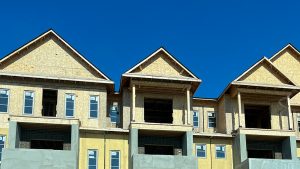The arrival of warmer temperatures in Canada has traditionally meant that testing season for radon — an odourless gas that is a major contributor to lung cancer deaths — is coming to an end.
Not so fast, though.
Radonova, a company that does radon tests and measurements in Canada and the U.S., is warning testing for radon should be done year-round, not just in the winter months when doors and windows are closed.
The reason?
An earlier study done by a number of experts who work at the Robson DNA Science Centre, Charbonneau Cancer Institute, and Cumming School of Medicine at the University of Calgary, indicated radon exposure is rising steadily within the modern North American residential environment and that levels of the gas are increasingly uniform year-round and no longer just a problem in winter.
Zan Jones, vice-president of sales and marketing at Radonova, says radon levels are a health risk throughout the entire year because of the rise of energy-efficient and environmentally friendly homes that are very airtight and designed to prevent the escape of air-conditioning flow during summer or heat during winter.
“Historically, it has been the norm for radon testing to be conducted during the winter months when indoor radon exposure is assumed to be higher,” she says.
“During the cold winter months, people tend to spend more time in closed indoor environments, with windows shut and the heat on, to avoid the cold weather. This airtight indoor environment keeps radon trapped within the home.
“The study states that there was no statistically significant difference in the distribution of radon readings across any season.”
The study tested radon levels in 11,727 residential buildings in Alberta and Saskatchewan using multiple approaches.
Radon is a colourless gas that forms when the uranium in natural stone below a home or building decays into radon progeny which are harmful radioactive atoms that get caught in the respiratory tract of individuals when they breathe. It accounts for up to 20 per cent of lung cancer deaths worldwide.
“The long-standing viewpoint that radon levels are higher during the cold winter months when people are keeping their houses closed and turning up the heat is an outdated 20th-century perspective on radon,” reads the study.
A previous study of Calgary-area buildings found a 31.5-per-cent increase in radon levels in homes built since 1992 versus older structures, because the modern houses are too efficient at limiting the amount of unregulated air coming in or out of the house.
Jones says the study results weren’t necessarily surprising but they are troubling.
With the onset of modern, energy-efficient and sustainable building techniques, radon-related health problems will continue to trend upward if awareness does not continue to grow.
“With the focus on constructing energy efficient homes, there needs to be a focus on building radon-resistant homes,” she says. “Also, improving the energy efficiency of an existing home should include measuring for radon and providing radon reduction or mitigation if radon levels are above the safe level.”
In Canada, she says, a level of less than 200 becquerels per cubic metre is considered to be the limit before radon mitigation is recommended.
Radonova is presently trying to draw attention to the issue and convince homeowners to get their dwellings tested year-round, especially if they are deemed energy-efficient houses.
Because radon levels in a home can vary throughout the year, it is prudent to measure during different seasons to know if radon levels are fluctuating, says Jones.
“Radon levels can vary from home to home within a neighbourhood — and even between apartments in the same building. This is why it is important for everyone to test their dwelling.”
The U.S. Environmental Protection Agency recommends testing for radon in a home every two years after buying a new home or renovating an existing one, or every year after installing a radon mitigation system.
“We recommend testing during the spring/summer months and then testing again during the autumn/winter months,” explains Jones. “If you are able to measure for one full year, that will provide the best average radon exposure over the long term.”
The toll caused by exposure to radon is heavy.
“In Canada, it is estimated that 16 per cent of lung cancer deaths are from radon exposure each year – more than 3,000 deaths,” says Jones. “In the U.S., the deaths from radon-induced lung cancer are approximately 21,000. For people who smoke and are exposed to radon, the risk for lung cancer is even higher.”
Meanwhile, other research by Dr. Petros Koutrakis and Dr. Carolina Zilli Vieira of the Harvard University T.H. Chan School of Public Health suggests radon exposure-related lung cancer deaths could be underestimated.
“Radon can attach to other particles in the lungs and penetrate the epithelium lung lining and become systemic,” Jones says.
“This then causes health problems throughout your body in the brain, kidneys, heart, and fetus. Therefore, lung cancer is not the only radon-related morbidity.”











Recent Comments
comments for this post are closed